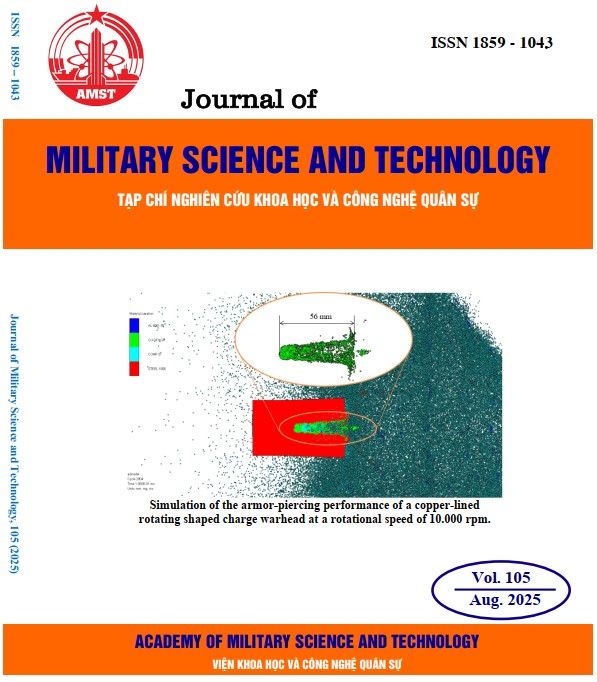Development of biodegradable lubricating grease for application in specialized equipment operating under marine environmental conditions
344 viewsDOI:
https://doi.org/10.54939/1859-1043.j.mst.105.2025.67-74Keywords:
Lubricating grease; Biodegradation; Friction; Wear.Abstract
Lubricating greases play a crucial role in protecting and maintaining the stable operation of equipment, particularly under the harsh and corrosive conditions of marine environments. Most currently available greases are formulated from mineral oils, which are non-biodegradable and pose serious environmental pollution risks. In response to the increasing demand for environmentally friendly alternatives, especially in marine environments where various military devices operate, the development of biodegradable lubricating greases has become a necessity. This study presents the synthesis and evaluation of a biodegradable grease formulated using castor oil as the base oil, lithium 12-hydroxystearate soap as the thickener, and functional additives with anti-corrosion and anti-wear properties. The grease was prepared with a thickener-to-base oil ratio of 14:86 wt.% and temperature processed at 220–230 oC, resulting in a stable structure and high homogeneity. Salt spray test results demonstrated a significant improvement in metal surface protection. Additionally, the grease exhibited a load-carrying capacity of 315 kg and a biodegradability exceeding 70%. The results indicate that the grease offers excellent lubricating and protective properties and high biodegradability, making it suitable for equipment operating in marine environments.
References
[1]. Agus Nugroho et al., “Recent advances in harnessing biolubricants to enhance tribological performance and environmental responsibility - Bibliometric review”, Cleaner Engineering and Technology, Vol. 23,100821, (2024). DOI: https://doi.org/10.1016/j.clet.2024.100821
[2]. O. J. Aluyor et al., “Biodegradation of mineral oils – A review”, African Journal of Biotechnology, Vol. 8, No. 6, pp. 915-920, (2009).
[3]. Jia Leang Teh et al., “A review on the properties and tribological performance of recent non-aqueous miscible lubricants”, Journal of Molecular Liquids, Vol. 366, 120274, (2022). DOI: https://doi.org/10.1016/j.molliq.2022.120274
[4]. J. Salimon et al., “Biolubricants: Raw materials, chemical modifications, and environmental benefits”, Eur. J. Lipid Sci. Technol., Vol. 112, No.5, pp. 519–530, (2010). DOI: https://doi.org/10.1002/ejlt.200900205
[5]. A. Campanella et al., “Lubricants from chemically modified vegetable oils,” Bioresour. Technol., Vol. 101(1), pp. 245–254, (2010). DOI: https://doi.org/10.1016/j.biortech.2009.08.035
[6]. J. Padgurskas et al., “Tribological study of beeswax-thickened biogrease and its modification with carbon nanoparticles, Tribology International”, Vol. 184, 108465, (2023). DOI: https://doi.org/10.1016/j.triboint.2023.108465
[7]. M. S. B. Sapnar et al., “Tribological behaviour of palm-based bio grease with various additives and thickeners”, Intelligent Systems and Applications in Engineering, Vol. 12, No.23, 2837-2850, (2024). DOI: https://doi.org/10.53555/ijisae.v12i23s.7533
[8]. Ha, P. T et al., “Nghiên cứu ảnh hưởng của dầu ve đến tính chất mỡ phân hủy sinh học gốc xà phòng liti trên cơ sở hỗn hợp dầu sở-ve”, Vietnam Journal of Chemistry, No. 45, pp. 42-46, (2014) (in Vietnamese).
[9]. Ho Thi Ngoc Han et al., “Tổng hợp mỡ bôi trơn sinh học từ mỡ cá tra, cá basa và dầu thực vật đã qua sử dụng”, CTU Journal of Science, No. 13, pp. 50-58, (2010) (in Vietnamese).







